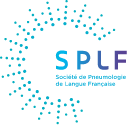Does spinal direct current stimulation enhance synaptic inputs to phrenic motoneurons in humans? A double-blind, sham controlled, randomized crossover study - 04/04/15
 , J.C. Lamy 4, 5
, J.C. Lamy 4, 5Resumen |
Background |
Pilot studies have evidenced the possibility of altering corticospinal projections to phrenic motoneurons (PMNs) and modifying respiratory behavior using repetitive transcranial magnetic stimulation (rTMS). Similar evidence lacks regarding induced neuroplasticity at the spinal level.
Objective |
This study was designed to investigate the immediate and long-lasting effects of a single session of transcutaneous spinal direct current stimulation (tsDCS), a non-invasive way of modulating spinal cord functions, on corticophrenic excitability in healthy humans.
Methods |
Using a double-blind, controlled, randomized crossover approach, we examined the effects of anodal, cathodal, and sham tsDCS delivered to C3–C5 on:
– diaphragm motor-evoked potentials (DiMEP) elicited by transcranial magnetic stimulation (TMS);
– resting motor threshold (rMT) of the diaphragm and short interval intracortical inhibition (sICI) thought to reflect GABAergic inhibition in the motor cortex;
– spontaneous ventilation, as measured by respiratory inductance plethysmography and a measure of ventilatory mathematical complexity (noise limit).
Results and conclusions |
Both anodal and cathodal tsDCS induced a progressive increase of DiMEP amplitude during stimulation that persisted for at least 20min after current offset. They also lowered rMT. sICI and noise limit were unchanged, suggesting that enhanced excitability was spinal rather than cortical or medullary. Cathodal tsDCS induced a persistent increase in tidal volume. tsDCS can therefore result in polarity-dependent breathing pattern changes, which opens the perspective of harnessing respiratory plasticity as a therapeutic tool in disorders altering the central ventilatory command or its spinal transmission.
El texto completo de este artículo está disponible en PDF.Keywords : Physiology, Ventilatory command



